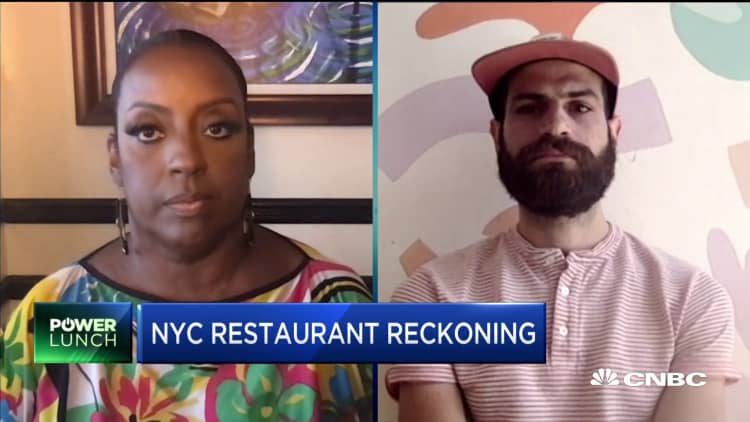Labor Day unofficially marks the end of summer and the start of colder temperatures around much of the United States. This year, it is ushering in more worries for restaurant owners trying to keep their eateries afloat.
Chilly weather means fewer customers willing to eat outside, while indoor dining rooms will likely still face capacity limits. Landlords' patience may be running out, and funding from the Paycheck Protection Program has dried up. Fine and casual dining restaurants will be missing out on large orders for holiday parties that won't take place this year. And worst of all, the threat of a second wave of coronavirus infections looms, which could bring another round of strict lockdowns.
"Nobody knows what the normal flu season looks like when we combine it with Covid, so there's quite a bit of concern," said David Bagley, managing director of Carl Marks Advisors.
Industry experts predict that cold weather could undo some of restaurant industry's recovery, which was both helped and hindered by government actions. Federal funds helped many establishments rehire workers and pay bills, while expanded outdoor dining has brought back some customers, even those leery of eating indoors. Still, some restaurants have significantly fewer tables outside than those that sit empty indoors.
"Even in good weather, outdoor dining is not a solution," said Niki Russ Federman, co-owner of the 106-year-old eatery Russ & Daughters. "It's not even a Band Aid. It's a desperate lifeline to hang on a little longer until there's actual relief."
In New York City, where indoor dining remains verboten until Sept. 30, Russ & Daughters' cafe reopened for outdoor dining in July, and sales slid 90% compared with the same time a year ago. The cafe lost $16,000 that month — without paying rent.
Patio heaters and tents could give some outdoor dining areas a longer lifespan. However, not all restaurant owners will want to spend money that they don't have.
"It's very hard to think about investing more money into outdoor dining when that's a losing proposition," Federman said.
Municipalities and states that allow indoor dining are continuing to restrict capacity, and frustration abounds with government officials' perceived lack of transparency.
For example, before Gov. Andrew Cuomo announced on Wednesday the return of indoor dining in New York City at the end of the month, a coalition of local restaurants sued the city and the state for $2 billion, demanding an end to the ban. The New York City Hospitality Alliance, which represents thousands of restaurants and bars, threatened a similar suit in mid-August.
Cuomo is still limiting indoor dining rooms to a quarter of their prior capacity, and more than 10,000 restaurants will lose expanded outdoor dining when it expires at the end of October. Across the Hudson River, New Jersey resumed indoor dining at 25% capacity on Friday.
"With cold weather coming, with PPP money expiring, we are going to see a mass die-off of restaurants," Federman said.

While chains like California Pizza Kitchen have already filed for bankruptcy, Bagley predicts that the next wave of restaurant bankruptcies will depend on their internal forecasts for the holiday season.
However, it's the health of the independent restaurants that are most at risk because of the pandemic. A Bank of America study published last week found that spending at big chain restaurants has returned to growth, but spending at independent restaurants is still under pressure. Smaller eateries are more likely to be full-service restaurants, which traditionally rely more on dining room sales and don't have much financial flexibility.
Bagley said the outcome also will depend on restaurants' relationships with their landlords. Another shutdown or stricter capacity limits during the colder months could bring greater flexibility on rent payments. Otherwise lagging sales could be hard to use at the negotiating table.
"If sales are just slow because customers aren't out and they don't want to be out during that period of time out of fear, now what do I tell my landlord?" Bagley said. "If government shuts them down again, it actually may be better for restaurants."
Federman, as part of the leadership team for the Independent Restaurant Coalition, is fighting for another path forward for smaller eateries. The group is lobbying for the passage of the Restaurants Act, which has garnered support on both sides of the aisle and would create a $120 billion grant program for independent restaurants through the end of the year. Eateries with annual revenue of $1.5 million or less would be prioritized during the first two weeks of the program. Without it, the IRC estimates that up to 85% of independent restaurants could close.
"As a whole, the restaurant industry has been so uniquely and disproportionately decimated by the pandemic and handcuffed in its ability to revive itself," Federman said.



